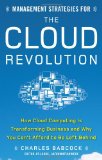Underpinned by both technology and economic disruptions, the cloud will centrally change the way technology providers engage with business customers and any one users. Global income from public cloud computing services is expected to evolve at 5 times the rate of traditional IT, according to International Data Corp. As for the hard numbers, public IT cloud services income is anticipated to hit $55.5 billion in 2014, up from $16 billion in 2009. ? The cloud computing model will dominate growth for the next 20 years; ? There will be a next-generation of killer apps; ? Small and medium-sized business will lead the public cloud computing charge ? Leading it vendors will change as cloud computing gains market share. ? Cloud computing will account for more than a quarter of the net new growth
With the advent of the cloud, higher internet speeds and current security, companies will no longer have to build giant IT infrastructures. Nor will they have to bear the expense of the hardware, networking and software requirements required by today’s computing methodologies. In the very near future “cloud” computing will replace the desktop and client/server paradigms to create a more capable model for companies to leverage technology, manage their computing and IT needs and more. The savings for companies that take advantage of this technology doesn’t just end there. Outside of technology companies will save on document management, records management, archiving, audits, personnel and more.
The efficiency by which cloud computing allows companies to manage their infrastructure will allow for as much or as little computing power to be obtainable as a company grows almost at once.
As this market matures companies will start to compete in the space currently dominated by filocity.com. Read this comment about filocity. “Filocity provides the virtualized infrastructure and toolsets that expand the current model for computing both on and offline. Filocity, with a zero cost of entry, allows individuals and company’s enterprise level back office features never before available in one place, with hosting utilizing the latest in secure “cloud” services. Whether for an individual computer user or enterprise level corporate environment, Filocity allows for an easy to use expandable platform for people to collaborate with all of the business critical information they require available to them from any computer or PDA anywhere in the world. Forget about obsolete infrastructures and upgrading your IT department. The true paperless office has arrived.” If you take the quote above in context it shows the power of the cloud. With cloud computing an individual or a multinational company have the same cost of entry that is affordable to all. Companies can go back to focusing on their products and services. The cost of customization to handle specific needs even for a multinational company becomes insignificant compared to what companies are using today. The toolsets required for all businesses are readily available from any web browser, anywhere in the world, at anytime.
For more information read The future of computing -Document management and software in the cloud Part 2. To start taking advantage of this technology.
The future of computing -Document management and software in the cloud Part 1Underpinned by both technology and economic disruptions, the cloud will fundamentally change the way technology providers engage with business customers and individual users.Global revenue from public cloud computing services is expected to grow at 5 times the rate of traditional IT, according to International Data Corp. As for the hard numbers, public IT cloud services revenue is expected to hit $55.5 billion in 2014, up from $16 billion in 2009. ? The cloud computing model will dominate growth for the next 20 years; ? There will be a next-generation of killer apps; ? Small and medium-sized business will lead the public cloud computing charge ? Leading it vendors will change as cloud computing gains market share. ? Cloud computing will account for more than a quarter of the net new it growth
With the advent of the cloud, higher internet speeds and current security, companies will no longer have to build giant IT infrastructures. Nor will they have to bear the expense of the hardware, networking and software requirements required by today’s computing methodologies. In the very near future “cloud” computing will replace the desktop and client/server paradigms to create a more efficient model for companies to leverage technology, manage their computing and IT needs and more. The savings for companies that take advantage of this technology doesn’t just stop there. Outside of technology companies will save on document management, records management, archiving, audits, personnel and more.
The efficiency by which cloud computing allows companies to manage their infrastructure will allow for as much or as little computing power to be available as a company grows almost instantly.
As this market matures companies will start to compete in the space currently dominated by filocity.com. Read this comment about filocity. “Filocity provides the virtualized infrastructure and toolsets that expand the current model for computing both on and offline. Filocity, with a zero cost of entry, allows individuals and company’s enterprise level back office features never before available in one place, with hosting utilizing the latest in secure “cloud” services. Whether for an individual computer user or enterprise level corporate environment, Filocity allows for an easy to use expandable platform for people to collaborate with all of the business critical information they require available to them from any computer or PDA anywhere in the world.
Forget about obsolete infrastructures and upgrading your IT department. The true paperless office has arrived.” If you take the quote above in context it shows the power of the cloud. With cloud computing an individual or a multinational company have the same cost of entry that is affordable to all. Companies can go back to focusing on their products and services. The cost of customization to handle specific needs even for a multinational company becomes insignificant compared to what companies are using today. The toolsets required for all businesses are readily available from any web browser, anywhere in the world, at anytime.



















Stay in touch!